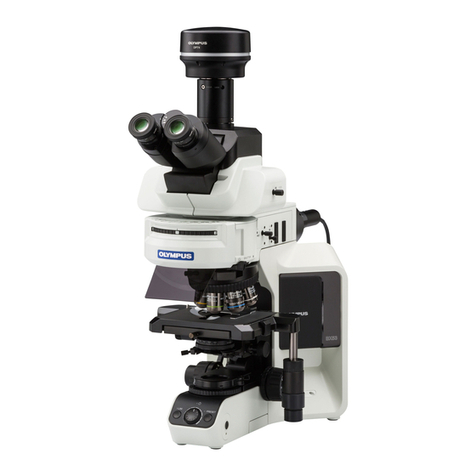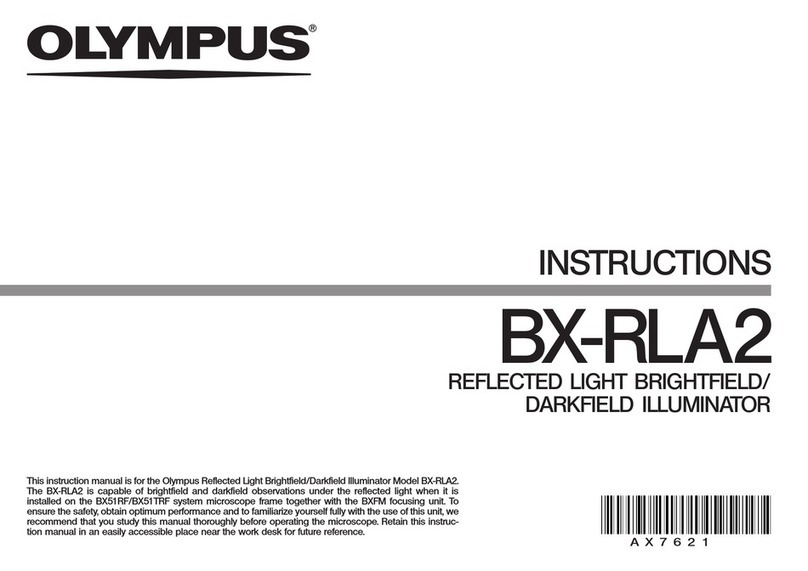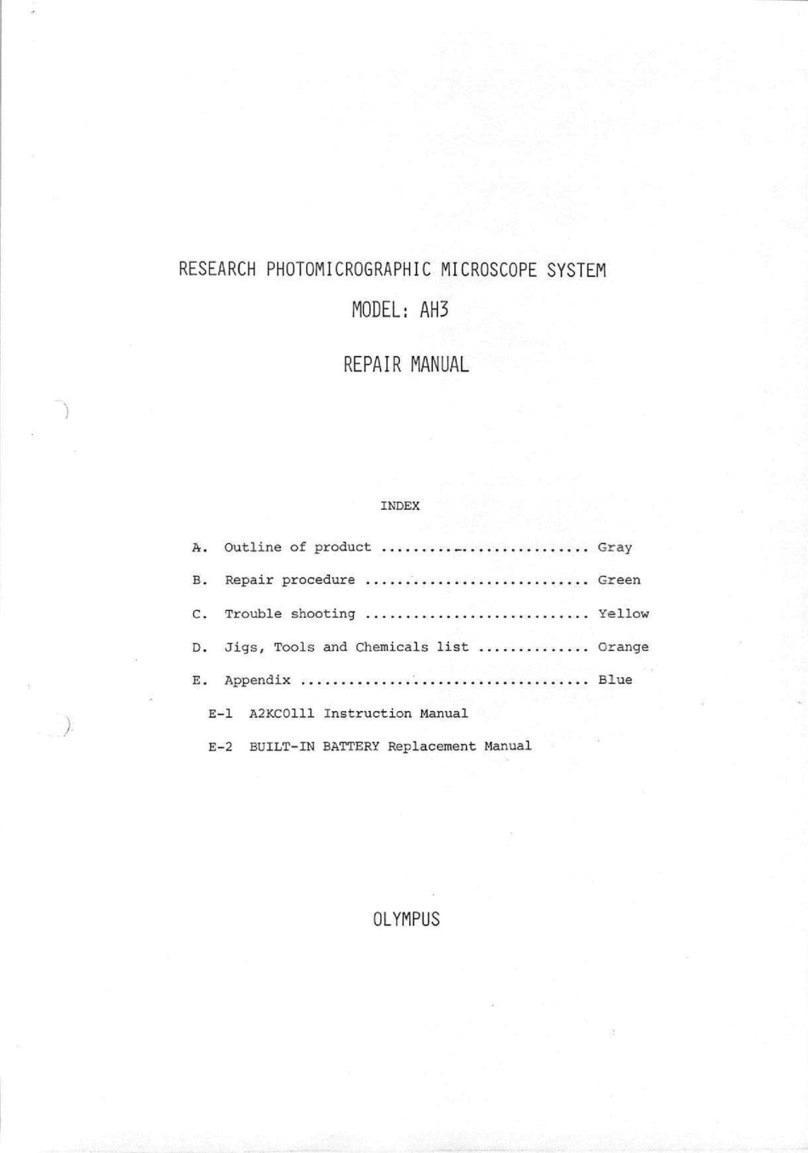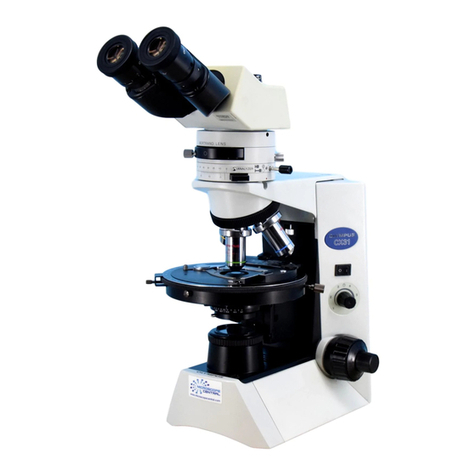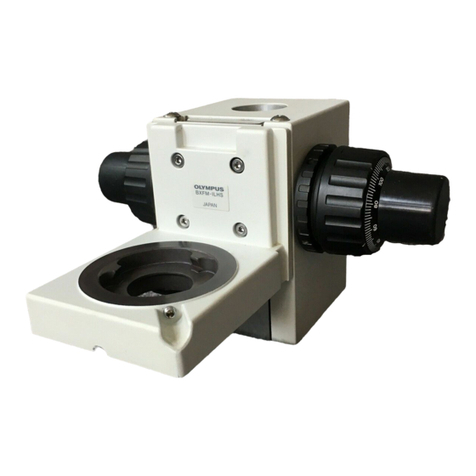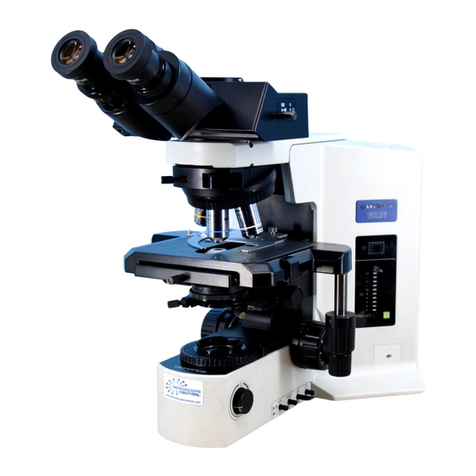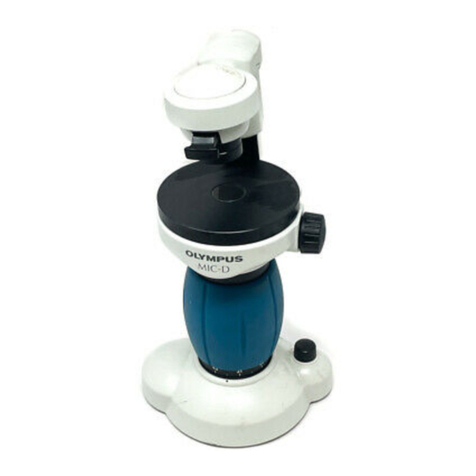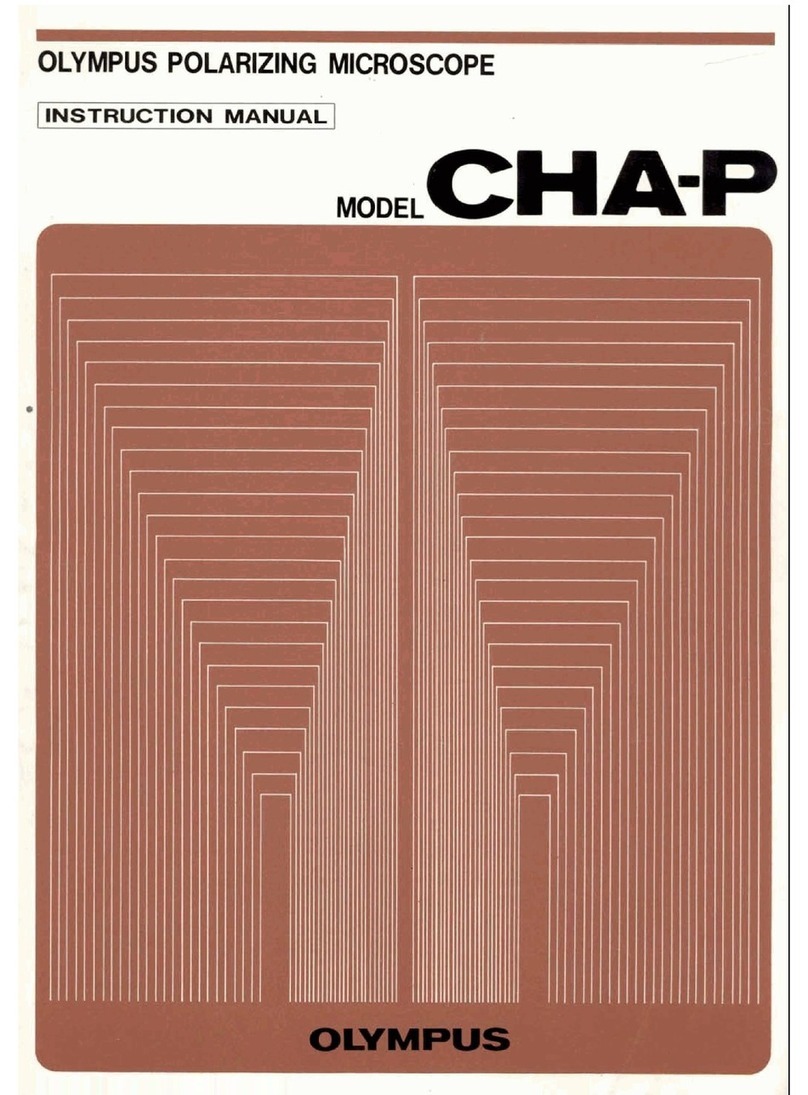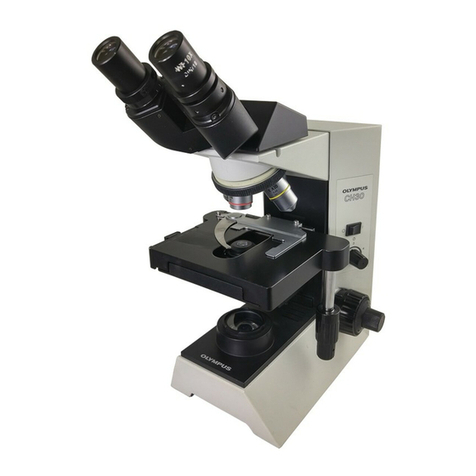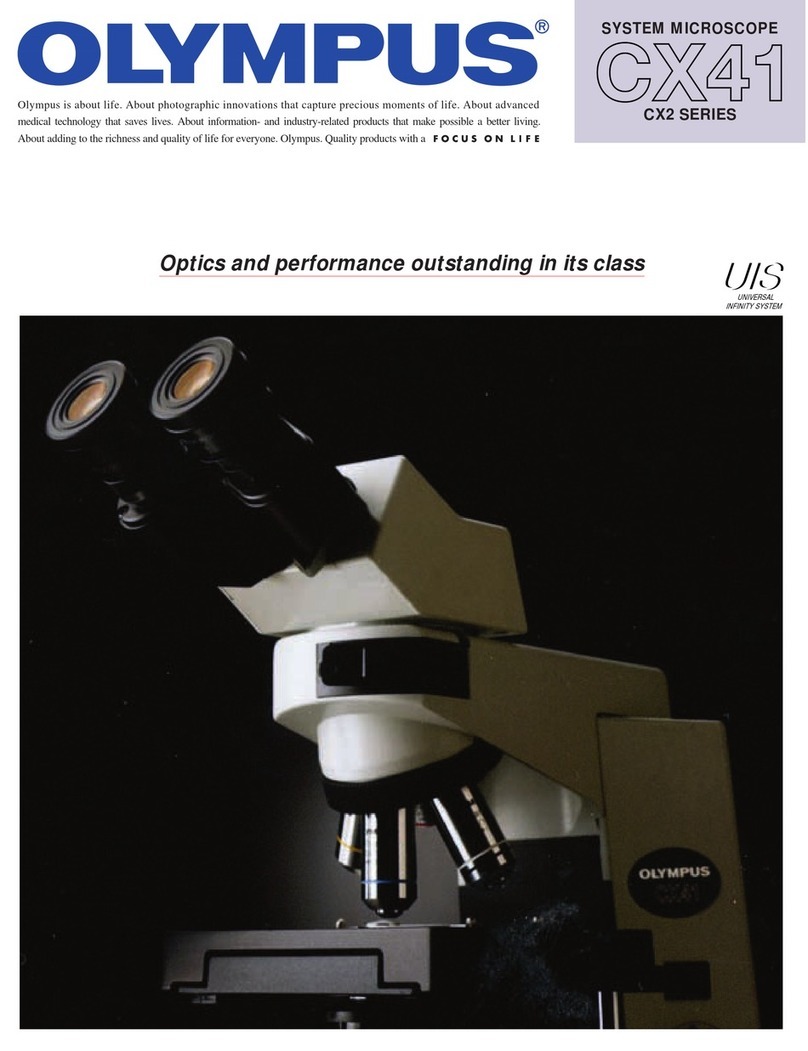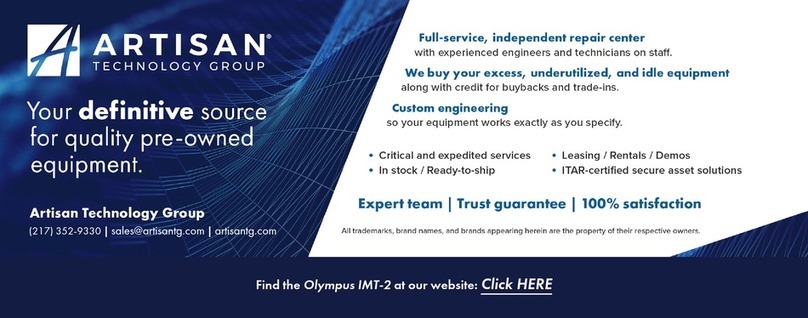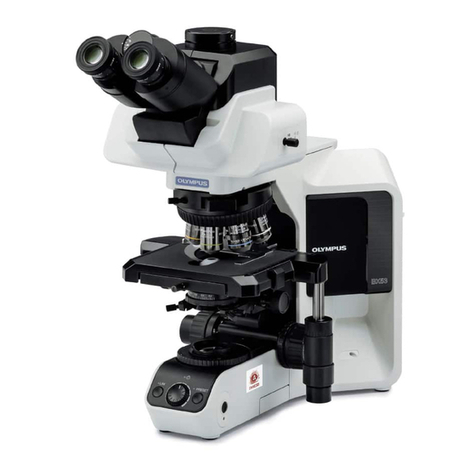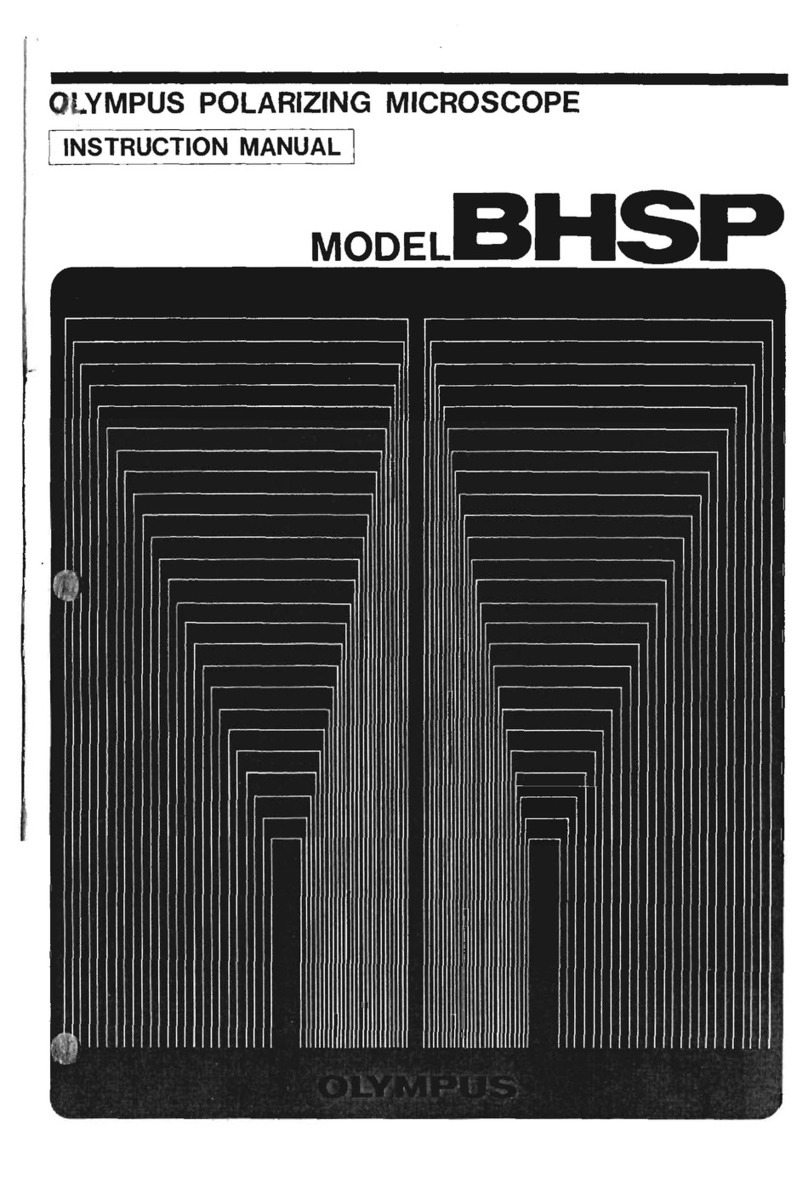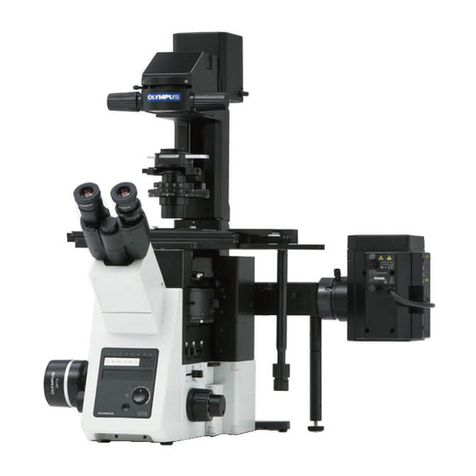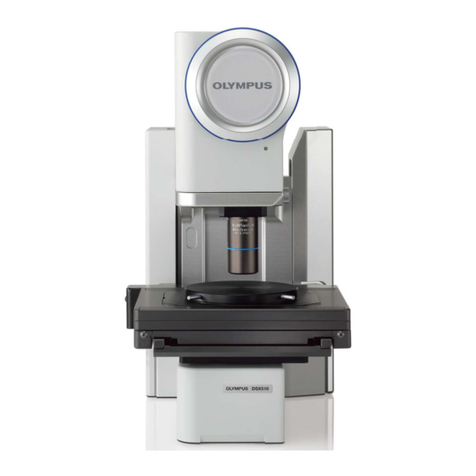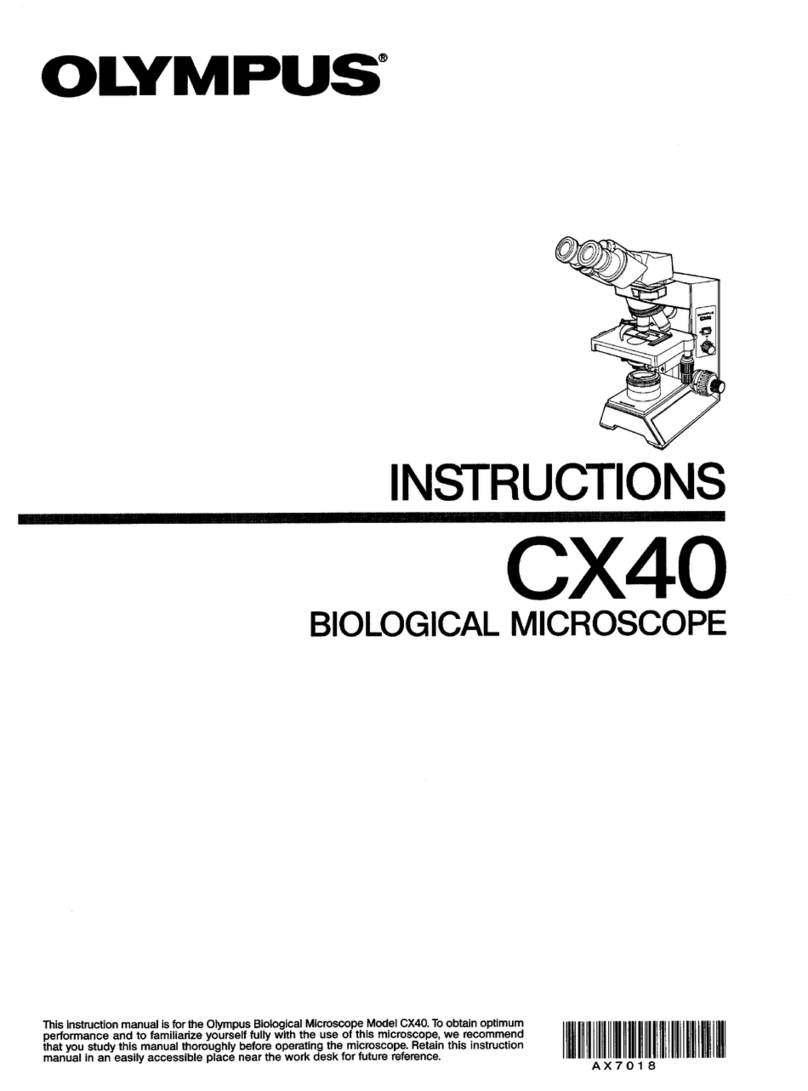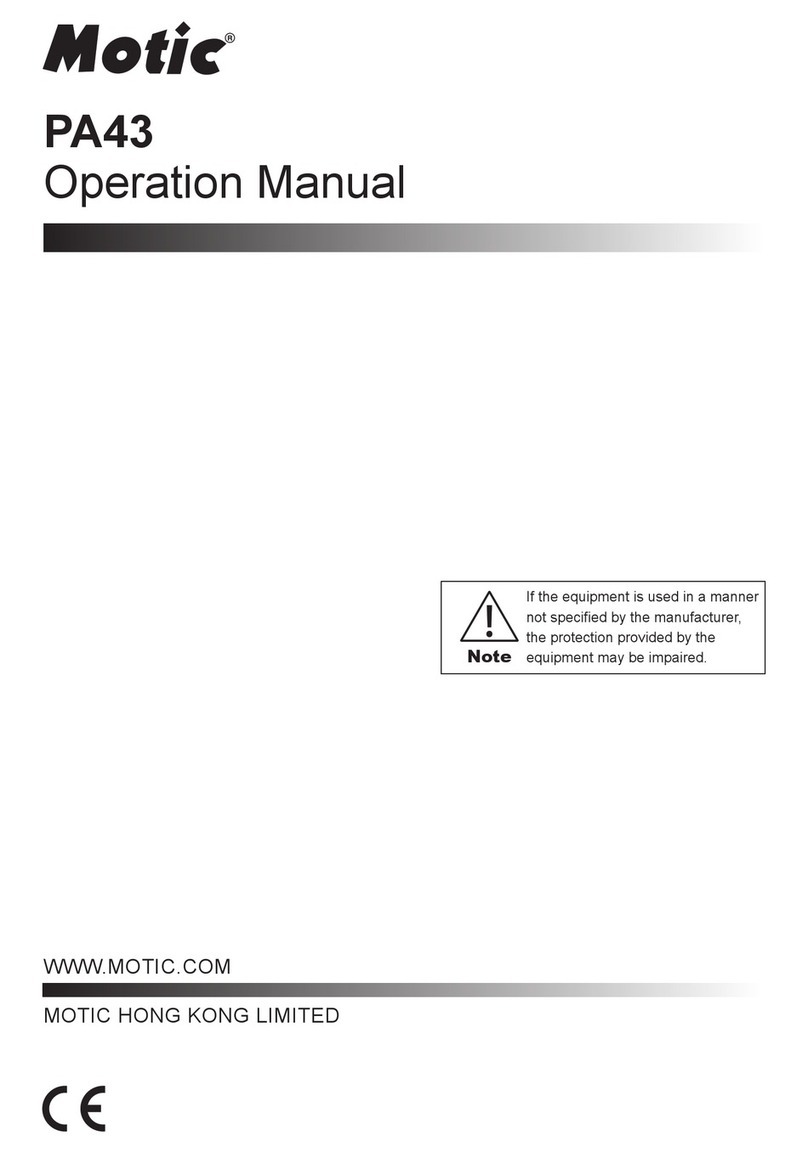2. Focusing
Afte~
completion
of
the centering
of
the
illuminating system, place the specimen
on
the stage and focus the
microscope on the specimen.
If
you move the body tube up
and
down while looking through the eyepiece. you
may
jam
the objective
down
on
to
the specimen, and you could
quite
easily crack the specimen and the front
lens as well.
First,
use
alow·
power
objective,
and
operate
the
coarse
adjustment
knob
to lower
the
body
tube
until
the
tip
of
the
objective
comes
close
to
the
specimen.
All
this
must
be
done
while
looking
at
the
microscope
from
the
side.
Next,
look
into
the
eyepiece
and
raise
the
body
tube
to
roughly
focus
the
microscope on
the
specimen,
and
fasten
the
stopper
at
this
point.
ext,
turn the nosepiece
to
chilnge to an objective with adesired
magnification. Usc the fine
adjustment
knob
to get the specimen sharply in focus_
Move
the specimen by hand
or
operate the mechanical stage to bring the target area
of
the specimen into the center
of
the field
of
view.
3. Change
of
magnification
The magnifying power
of
the microscope
is
changed either
by
changing the eyepiece or by changing the
objective.
I)
Change
of
the eyepiece
Eyepieces with different magnifications arc inserted into the eyepiece sleeve to change the magnifying power
of
the microscope. In this case, the microscope remains roughly
in
focus but further focusing
is
required to
obtain
asharply focused image.
2) Change
of
the Objective
When the objective
is
changed to change the magnification
of
the microscope, you first focus the microscope
with alow-power Objective
and
then turn the nosepiece to change to ahigher-power objective.
In
Model
HS
you need only operate the fine adjustment
knob
to
obtain an accurate focus.
4. Resolving Power
The
resolving
power
of
amicroscope
depends
solely on
that
of
the
objective
and
has
nothing
to
do
with
the
eyepiece. The only function
of
the eyepiece
is
to
magnify the image resolved by the objective. This means that
no
matter
how
much the final magnification may
be
increased by using ahigh-power eyepiece, you will never
see what is not shown
in
the image that
is
formed
by
the objective. For example, you get the same magnifiC'dtion
of
800X
by
using a
40X
objective and a20X eyepiece,
and
also by using aIOOX objective and a
8X
eyepiecc.
However. the latter combination has aresolving power twice higher and show more details than the former
combination.
-6-
